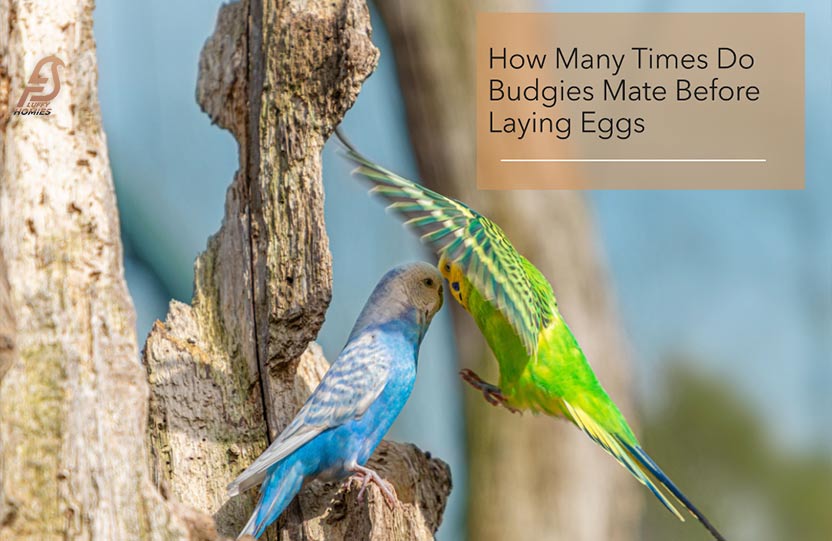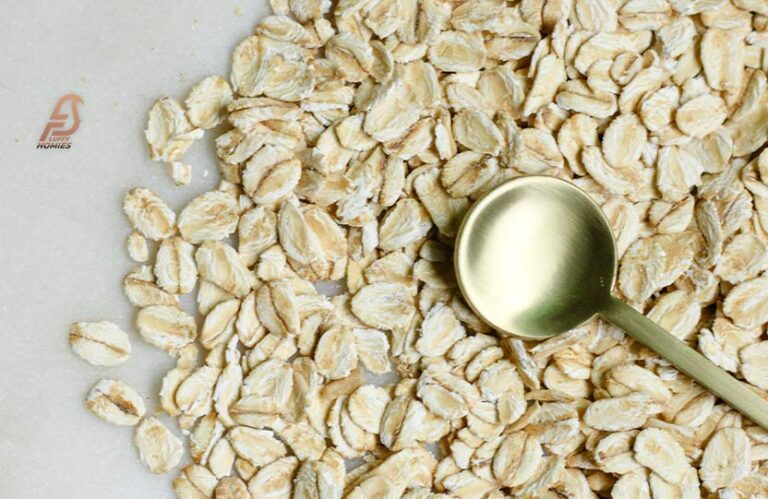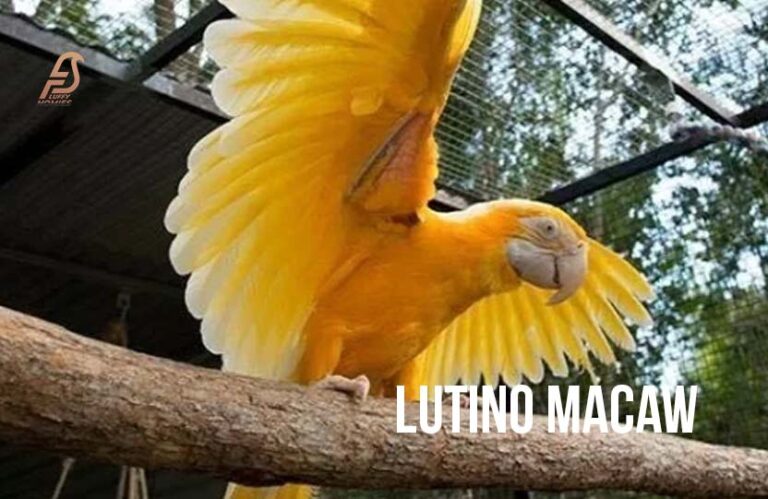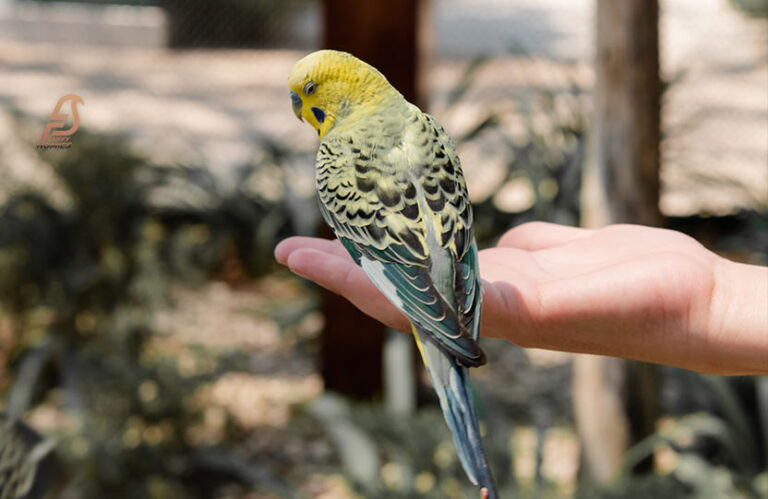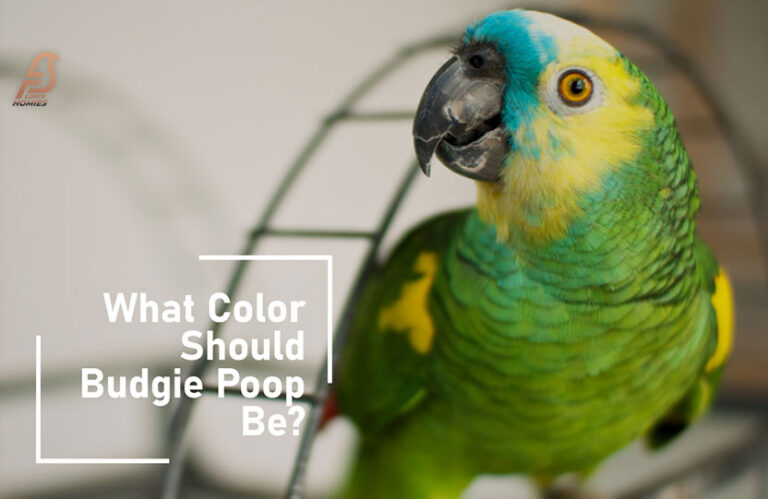Nature’s Countdown: Budgie Mattings That Lead to Egg-laying
As a budgie owner, it’s important to understand their breeding habits to provide appropriate care and support during their reproductive cycle.
In this article, we will delve into the topic of how many times budgies mate before laying eggs. People also curious about do birds die after mating or not?
Knowing the signs and behaviors associated with mating can help you anticipate and get ready for the arrival of eggs because breeding and egg-laying are natural processes for budgies.
Additionally, for the health of the parent birds and the young, it is essential to comprehend the incubation period and prerequisite circumstances for a successful hatching.
You can improve your understanding of budgie breeding and develop a setting that supports their reproductive needs by learning more about the mating behavior, mate signs, and the egg-laying process.
Understanding Budgie Mating Behavior
Budgies are social birds, and their mating behavior is an essential part of their instincts. In the wild, budgies live in flocks and form pair bonds with a mate.
When it comes to breeding, budgies are monogamous, meaning they mate with only one partner during a breeding season.
Pair Bonding and Courtship Rituals
Before breeding, budgies engage in courtship rituals to establish and strengthen their pair bonds. These rituals involve various displays of affection and bonding behaviors, such as regurgitating food for each other, preening, and chirping.
These activities help build trust and create a strong foundation for successful breeding.
Mating and Copulation
Once the pair bond is established, budgies mate to fertilize the eggs. Budgies are known for their acrobatic mating displays, which involve flapping their wings, chasing each other, and vocalizing.
During copulation, the male mounts the female from behind and transfers sperm into the female’s cloaca.
How Many Times Do Budgies Mate Before Laying Eggs?
The mating frequency of budgies before laying eggs can vary depending on various factors, including the age, health, and readiness of the pair.
On average, budgies mate several times over a few days or weeks before the female lays her first egg. However, it’s important to note that each budgie pair is unique, and the mating frequency can differ.
Frequency of Mating
During the breeding season, budgies may mate every day or every other day, depending on their readiness. The male initiates mating attempts by displaying courtship behaviors towards the female.
If the female is receptive, copulation occurs. However, it’s important to note that excessive mating attempts without any breaks may lead to physical exhaustion and stress for both birds.
Therefore, it’s essential to monitor their behavior and provide them with adequate rest periods. There is also many concerns about the parent behavior of budgies.
Factors Influencing Mating Frequency
Pair Bond Strength
Budgies with a strong pair bond are likely to mate more frequently than those with a weaker bond. The depth of their bond indicates their readiness to breed.
Female Readiness
Female budgies have specific signs of readiness for mating, such as a receptive posture, increased vocalization, and tail lifting. When a female is ready, the pair is likely to engage in mating more often.
Environmental Factors
The availability of suitable nesting sites and the presence of nesting materials can influence the mating frequency. A comfortable and secure environment encourages budgies to engage in breeding behaviors.
Also Read: Why Do Budgies Adjust Their Crop?

What Are the Signs of Budgies Mating?
When budgies are in the breeding mindset, they exhibit various signs and behaviors that indicate they are mating.
By recognizing these signs, you can better understand their reproductive cycle and provide appropriate care. Here are some common signs of budgies mating:
Increased Affectionate Behaviors
- Budgies engage in mutual preening, where they groom each other’s feathers. This behavior strengthens the bond between the pair.
- Another sign is a regurgitation of food. Budgies may regurgitate and feed each other as a display of affection and courtship.
Frequent Close Proximity and Cuddling
- Mating budgies often prefer to stay close to each other, seeking physical contact.
- You may observe them cuddling together on perches or snuggling side by side.
Chirping and Vocalizing Together
- Budgies use vocalization as a means of communication during mating.
- They may engage in synchronized chirping or engage in melodious vocal exchanges.
Courtship Displays
- Budgies display specific behaviors during courtship rituals.
- Head bobbing is a common courtship behavior where the budgie rapidly moves its head up and down.
- Feather fluffing is another sign, where the budgie puffs up its feathers, making itself look larger and more attractive.
- Beak tapping against surfaces, such as cage bars or toys, is also observed during courtship.
Will Budgies Mate Without a Nest Box?
Before providing next box you should know that how many should you get in a cage. While providing a nest box can create a suitable breeding environment for budgies, it is not always necessary for mating to occur.
Budgies can exhibit mating behaviors and successfully breed even without a nest box. Here are some key points to consider:
Explaining the Possibility of Mating Without a Nest Box
- Budgies are adaptable birds and can adapt their breeding behaviors to their surroundings.
- In the wild, budgies often nest in tree hollows, so they can adapt to breeding on perches or other comfortable surfaces within their enclosure.
Emphasizing that a Nest Box Is Not Mandatory for Mating
- Budgies can still engage in courtship rituals and copulation without a nest box.
- The presence of appropriate perches, toys, or platforms can provide suitable surfaces for mating.
Alternative Surfaces for Mating Within the Enclosure
- Budgies may choose various surfaces for mating, such as horizontal perches, branches, or cage bars.
- Providing a variety of perches with different diameters and textures can give them options for comfortable mating surfaces.
How Do You Know If a Budgie Is Going to Lay Eggs?
As a responsible person you have to know about your budgies that why budgies starve themselves, why birds not drinking water, and more.
As budgies progress through their breeding cycle, some specific behaviors and signs indicate the female budgie is preparing to lay eggs.
By being aware of these indications, you can better anticipate the arrival of eggs and provide appropriate care. Here are some key points to help you recognize when a budgie is about to lay eggs:
Increased Territorial Behavior
The female budgie may become more protective of a specific area within the cage, indicating her nesting territory.
She may exhibit defensive behaviors, such as guarding the chosen nesting spot and showing aggression towards intruders.
Nesting Behaviors
As egg-laying approaches, the female budgie may engage in specific nesting behaviors. This can include shredding paper or other cage materials to create a nest.
Another sign is feather plucking, where the female may pluck her feathers to line the nesting area.
Digging or Scratching Around the Cage Floor
The female budgie may show increased activity in digging or scratching motions on the cage floor. This behavior mimics the instinct to prepare a nest in the wild.
Extended Periods in the Nesting Area or Restlessness
As the time for egg-laying draws near, the female budgie may spend more time in the chosen nesting area.
She may also exhibit restlessness, frequently moving in and out of the nest, adjusting materials, and preparing for egg deposition.
These behaviors are common indicators that a female budgie is preparing to lay eggs. However, it’s important to note that not all budgies may exhibit the same behaviors, as individual personalities and circumstances can vary.
Observing these signs can help you anticipate the arrival of eggs and make necessary preparations for a comfortable and safe nesting environment.
Also Read: Do Parakeets Like to Climb?
How Do I Know If My Budgie’s Mating Attempt Is Successful?
The Right Age and Essentials
Before we delve into the intricacies of budgie mating, it’s important to ensure that your feathered friend meets certain criteria. Budgies should be at least 12 months old to engage in successful mating behavior.
This maturity ensures that they are physically and emotionally ready to enter the breeding phase. Moreover, you need to provide them with the right environment to support their romantic endeavors.
Now that we have set the stage for budgie romance, let’s explore the fascinating world of their mating rituals.
The Wooing Dance
Male budgies are natural charmers when it comes to wooing their potential partners. One of the key signs of a successful wooing attempt is the male’s behavior toward the female budgie.
You may notice the male budgie gently tapping his beak against the beak of his intended mate. This beak tapping serves as a form of stimulation and is the first step in the courtship process.
The Female’s Response
So, how does the female budgie respond to the male’s advances? When the female budgie is receptive to the male’s wooing, she will indicate her interest through specific body language.
You may observe her lifting her tail in the air and raising her wings slightly. These subtle gestures communicate to the male that his romantic efforts have not gone unnoticed and have been successful thus far.
The Cloacal Kiss
Once the male budgie has successfully captivated the female’s attention, the mating dance continues. The next step in the courtship process involves a behavior known as the “cloacal kiss.”
Although it may sound like a kiss, it’s not quite the same as the affectionate gesture humans are familiar with. In the world of budgies, the cloacal kiss refers to the male touching the female’s vent, the opening used for both waste elimination and mating.
During this intimate moment, the male budgie will gently rub his vent against the female’s vent, moving from side to side.
This action helps to stimulate the female and may last for approximately 2 to 3 minutes. Budgies are known to repeat this process multiple times a day, usually between 2 to 3 sessions.
How Long After Mating Do Budgies Lay Eggs?
From Mating to Egg-Laying Delight! Following a successful mating, the female budgie embarks on an exciting phase of laying eggs.
After a brief wait of 10 days, the female budgie begins her egg-laying adventure, bringing forth the promise of new life.
Over two weeks, she showcases her nurturing instincts by laying an average of 4-7 eggs. But before the precious eggs arrive, she needs your support.
Create a cozy nesting box for her, a sanctuary where she feels comfortable, safe, and ready to embrace motherhood.
As she gracefully lays her eggs, don’t forget to provide her with a calcium-rich diet and an abundance of vibrant vegetables and leafy greens.
These little additions play a vital role in ensuring her well-being and safeguarding her from infections. Eggs will appear every 2-3 days, each one a testament to the miraculous journey unfolding.
Keep an eye out for any signs of chronic egg-laying, a perilous situation that requires immediate attention and care.
Also Read: Why Do Budgies Talk in Their Sleep?
How Many Days for Budgie Eggs to Hatch?
There are some types of questions before the hatching time that why are my bird eggs not hatching. In that you should learn patience and allow them to hatch.
Once the budgies have successfully mated and the female has laid her eggs, it’s time for the brooding phase.
Typically, budgies brood for 18-23 days, during which the female remains dedicated to keeping the eggs warm, seldom leaving the nest.
After this incubation period, the eggs should hatch, and you’ll be greeted with adorable baby budgies! However, it’s important to note that any eggs that remain unhatched after 23 days will not produce chicks.
Do Budgie Eggs Need to Be Incubated?
People also ask how to incubate and hatch parrot eggs at home? For budgie eggs to develop and hatch successfully, they require proper incubation. The responsibility of incubation falls primarily on the female budgie.
Understanding the necessity of incubation and providing the right conditions is vital for the well-being of the eggs and the breeding pair. Here are some key points to consider:
Role of the Female Budgie in Incubation
The female budgie assumes the primary responsibility of incubating the eggs. She uses her body heat to regulate the temperature required for embryonic development.
The female budgie will spend a significant amount of time sitting on the eggs to maintain the necessary warmth.
Providing a Warm and Secure Environment for Incubation
It is crucial to provide a suitable nesting area that offers privacy and security for the female budgie and her eggs. Ensure that the nesting box or chosen area is well-insulated and shielded from drafts.
The nesting material should be soft, such as wood shavings or shredded paper, providing a comfortable surface for the eggs.
Ensuring Successful Development and Hatching
Stable temperature and humidity levels play a critical role in the development of the embryos. Avoid frequent disturbances or handling of the eggs, as it can disrupt their development.
Maintain a quiet and calm environment around the nesting area to minimize stress on the breeding pair.
Conclusion — How Many Times Do Budgies Mate Before Laying Eggs?
Understanding the breeding habits of budgies is essential for anyone interested in caring for these delightful birds.
Budgies are known for their social nature and their ability to form strong bonds with their mates. When it comes to mating and egg-laying, budgies follow a fascinating process.
So, how many times do budgies mate before laying eggs? In general, budgies may mate multiple times before the female lays eggs.
The mating process involves courtship displays, such as singing, regurgitating food, and mutual preening. The male budgie often initiates the courtship by performing elaborate dances and displays to impress the female.
Once the pair has successfully mated, the female budgie will prepare to lay eggs. Budgies typically lay eggs in clutches, meaning they lay a series of eggs over a few days. The average clutch size ranges from 4 to 8 eggs, but this can vary.
It’s important to note that not all mating attempts result in the production of eggs. Factors such as the female’s age, overall health, and the compatibility of the breeding pair can influence the success of egg-laying.
To ensure a healthy breeding environment for budgies, it’s crucial to provide a suitable nesting box or area, along with a nutritious diet and proper care.
Additionally, it’s recommended to consult with an avian veterinarian or an experienced budgie breeder for guidance on breeding budgies responsibly.
FAQs — How Many Times Do Budgies Mate Before Laying Eggs?
How long after mating do budgies lay eggs?
Budgies usually lay eggs around 7 to 10 days after mating. This period allows for fertilization, egg development, and preparation of the nesting area.
How often do budgies lay eggs?
Budgies generally lay eggs every other day or every two days, depending on the individual bird. The frequency may vary due to factors such as health, age, and environmental conditions.
Can budgies breed at any time of the year?
Budgies have a breeding season typically occurring in spring and summer, but with proper care, they can breed year-round.
How long is a budgie pregnant?
Budgies, or parakeets, have an incubation period of approximately 18 to 20 days. During this time, the female budgie will lay eggs and both the male and female will take turns incubating them until they hatch.
